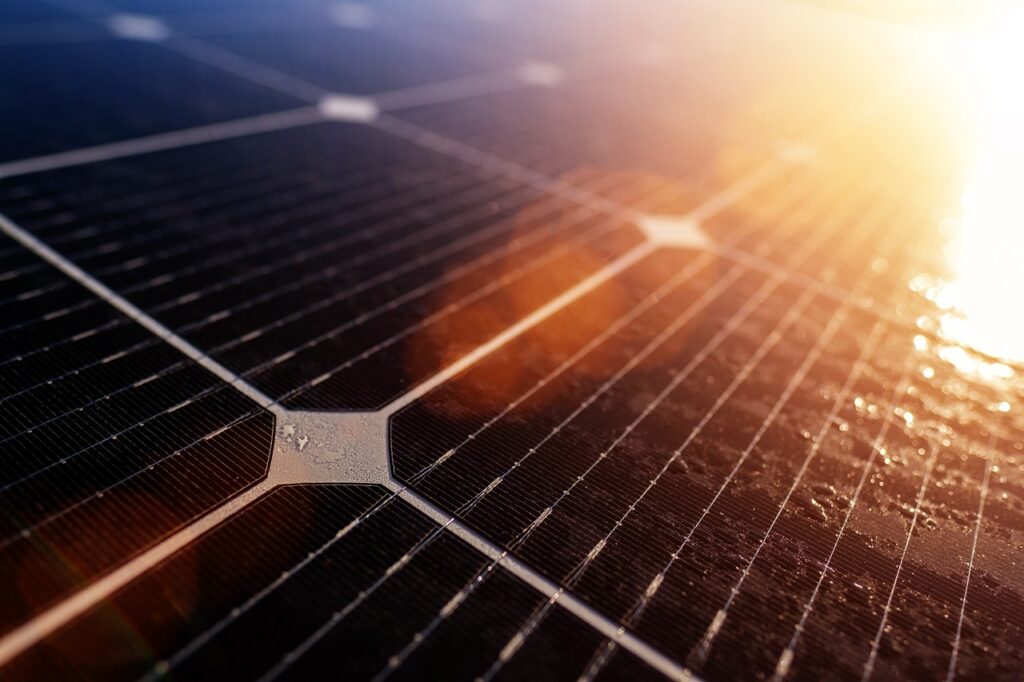You might be wondering. “What is a single-slope carport design?”
A single slope carport features a roof that angles in one direction. This design is simple but highly functional. The slanted roof allows for an even flow of rainwater, snow, and debris to one side. It also offers an ideal surface for the installation of solar panels.
The design has become increasingly popular due to its aesthetic appeal and potential to support energy efficient technologies.
Positioning and Orientation for Maximum Sunlight
The angle and orientation of a single slope carport roof make a significant difference in how much sunlight it can capture. When the slope is oriented toward the sun’s path, such as south-facing in the northern hemisphere, it receives direct sunlight for most of the day. This makes it ideal for homeowners who want to install solar panels. Aligning the carport with the sun’s movement ensures that the surface stays exposed to sunlight from morning until late afternoon, increasing its solar harvesting potential. The roof’s incline is not just a stylistic element but a functional one, carefully designed to suit specific geographical locations based on latitude and climate conditions.
This positioning is more than just beneficial for energy production. It also impacts how the structure interacts with other elements on the property. A well-positioned carport can serve as a passive solar tool, helping to warm or light adjacent structures or outdoor areas naturally. Additionally, its ability to maximize sunlight exposure without occupying roof space on the main house makes it a practical solution for homes with limited roofing area or those that are not ideal for solar installations. The single slope roof acts like a natural platform designed to make the most of every ray of sunlight that hits it.
Solar Panel Efficiency on Sloped Surfaces
Solar panels are most effective when they are installed at an angle that matches the sun’s elevation in the sky. A single slope carport offers a surface that already mimics this optimal tilt, making it one of the most efficient bases for solar technology. Instead of requiring additional mounting racks or adjustable supports, panels can be installed directly onto the sloped surface. This not only simplifies the installation process but also reduces costs, which is particularly helpful for homeowners working within a budget. The result is a clean, integrated system that looks as good as it functions.
Having solar panels on a sloped surface also contributes to long-term performance. Rainwater naturally runs off the panels, washing away dust and debris that could hinder solar absorption. This self-cleaning aspect reduces maintenance needs and supports uninterrupted power generation. The fixed angle also limits wear and tear on mounting systems since fewer mechanical parts are involved. Efficiency gains from this streamlined setup are often reflected in energy output levels and ultimately contribute to a shorter payback period for the investment.
Energy Savings and Reduced Utility Costs
Installing a single slope carport with solar panels can significantly cut down on a household’s reliance on electricity from the grid. Power generated during daylight hours can be routed to meet the daily energy needs of the home, from lighting and appliances to electric vehicle charging and power tools. This self-sufficiency reduces the volume of electricity pulled from the utility provider, and in many regions, homeowners can even feed excess energy back into the grid in exchange for credits. These financial benefits create an attractive long-term return on investment.
The cost savings become even more apparent during seasons of high energy use, such as summer and winter, when air conditioning and heating demand spikes. Solar-generated electricity can help shoulder that burden, preventing utility bills from skyrocketing. Over time, the cumulative savings can offset the cost of both the carport and the solar equipment. What starts as an energy-saving measure quickly evolves into a value-adding improvement that contributes to household budgeting and long-term financial planning.
Natural Lighting Benefits for Your Property
The architectural design of a single slope carport encourages the flow of natural light across the surrounding area. Depending on where it is placed, the structure can channel sunlight toward windows, doors, or garden beds. This results in improved natural illumination in nearby rooms or outdoor spaces. The enhanced lighting effect can transform shadowy areas into warm, inviting spaces that feel larger and more open. More light during the day reduces the need for artificial lighting, cutting energy consumption without sacrificing comfort.
In addition to practical advantages, there are psychological and health-related benefits to increased natural light exposure. Brighter spaces are known to elevate mood, support better concentration, and even regulate sleep patterns. A well-lit environment can be especially beneficial for home offices, workshops, or play areas situated near the carport. The ability to bring sunlight into everyday spaces without adding new windows or fixtures adds both value and wellness benefits to the property.
Temperature Regulation and Shade
A single slope carport does more than offer a place to park. It also provides strategic shade that helps maintain cooler temperatures in vehicles, adjacent rooms, and surrounding areas. Shielding windows or walls from direct sunlight can significantly reduce interior heat gain. This leads to more stable indoor temperatures and less strain on air conditioning systems. The shade also protects paint finishes and interior fabrics from sun damage, prolonging the life of vehicles and stored equipment.
Roofing materials selected for single slope carports often come with reflective coatings that deflect solar heat. These materials enhance the shading effect by preventing the roof from absorbing too much warmth. The result is a cooler zone beneath and around the carport, which can be appreciated during hot afternoons or warm evenings. As this cooling benefit extends to nearby rooms, it contributes to reduced energy usage across the home. Creating this buffer against heat is one of the most passive and effective ways to improve energy efficiency without additional mechanical systems.
Rainwater Collection Opportunities
The directional flow of a single slope roof simplifies rainwater harvesting. Gutters and downspouts can be installed on the lower edge to collect runoff efficiently. Collected water can be used for landscaping or stored for other nonpotable uses. Reducing reliance on municipal water supplies contributes to energy efficiency at a broader level by lowering demand on treatment facilities.
Ease of Maintenance and Longevity
Maintenance is simpler with a single slope roof due to its uncomplicated structure. Debris naturally flows off the roof instead of accumulating. Snow does not build up in uneven areas, which can prevent structural stress. These features extend the lifespan of both the roof and the solar panel system mounted on it. The reduction in maintenance needs contributes to cost savings over time.
Increased Property Value and Marketability
Homes that feature energy efficient upgrades such as solar ready carports often attract buyers seeking sustainable features. A well designed single slope carport not only adds curb appeal but also serves as a talking point that emphasizes environmental awareness. The long term energy savings and practical benefits make the property more attractive in the real estate market.
Environmental Impact and Sustainability
Reducing the carbon footprint of a home begins with smart design choices. A single slope carport that supports solar energy and conserves water contributes to a more sustainable lifestyle. Each kilowatt hour of electricity generated from solar reduces emissions associated with fossil fuels. Combining design with energy consciousness transforms a standard carport into a valuable environmental asset.
Versatility in Design and Material Choices
Single slope carports can be constructed from a variety of materials including steel, aluminum, and wood. This flexibility allows for customization to match the home’s architecture. Reflective or insulated roof materials can further boost energy efficiency. Design elements such as open sides or enclosed panels allow homeowners to balance aesthetics with performance.
Installation Process and Considerations
Building a single slope carport involves careful planning. Site selection, orientation, roof angle, and integration with existing structures must all be considered. Working with professionals ensures that the structure meets local codes and maximizes solar potential. Proper installation lays the foundation for long term performance and reliability.
Long Term Economic Advantages
Although initial installation may require investment, the long term economic benefits are substantial. Energy savings, reduced maintenance, and increased property value all contribute to a strong return. In some regions, homeowners may qualify for tax credits, rebates, or other financial incentives that further offset costs.
Integrating with Home Energy Systems
A solar equipped carport can be connected to the main energy system of the house. Power collected from panels can supplement household energy needs or charge batteries for later use. Smart inverters allow homeowners to monitor and manage energy flow, improving overall efficiency. This integration ensures that energy produced does not go to waste.
Conclusion
A single slope carport offers much more than shelter for your vehicle. It provides an ideal platform for capturing solar energy, reduces energy costs, and promotes sustainability. Thoughtful design choices and proper installation maximize these benefits. As homeowners continue to seek solutions that balance function, style, and environmental responsibility, the single slope carport stands out as an effective and forward thinking investment.

